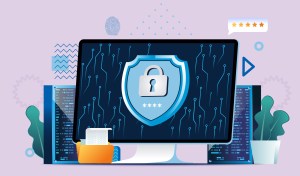Cybersecurity Comes Down to One Word: Planning
Cybersecurity has always been a concern for business leaders, but with the recent changes in the workplace, organizations have more to consider than which firewall they’re deploying. That’s why Tony Cartolaro, the Vice President of Hammer Tech, sat down with a member of the Marketing Development Representative team to discuss what business leaders should be thinking about when it comes to keeping their IT environment secure.
How Cyber Threats Have and Haven’t Changed
Remote environments may feel new to business leaders, and in some ways, they are. Organizations that offer flexibility to its employees will likely see benefits over the old model, but there should still be an appreciation of the basics.
Tony discusses how cybercriminals are using some old-school tactics like phishing and spear-phishing to gain access to an organization’s systems. Businesses that don’t provide the necessary training in how to spot phishing attempts can see credit card numbers, Social Security numbers, and other sensitive information compromised, whether their employees are working on site or remotely.
While phishing and spear-phishing attacks are well known cyber threats, the implementation of remote work comes with a need to provide protection not just to business-owned equipment, but to networks and devices that aren’t necessarily under the direct control of the organization’s IT department. Failure to do so can be a significant risk to the business’s ability to remain operational.
When is Data Secure?
Tony discusses ways that organizations can ensure their business data is secure by auditing what data is on hand and why it’s being kept. Once a business has an in-depth understanding of what’s in their servers, they can often minimize their risks by limiting the amount of unnecessary data in their environment.
However, aside from keeping one’s digital house in order, Tony recommends other forms of protection for any business’s IT environment, including multifactor authentication for server access, establishing a data loss protection plan, deploying end point detection, and more.
Planning a More Secure Future
While a cybersecurity liability insurance policy can be part of a mitigation plan, Tony doesn’t recommend relying on one to keep your business safe. Insurance can cover some costs of a breach, but it doesn’t shield an organization from reputational damage, weather events, or other problems which could lead to an outage and hurt your business’s ability to operate effectively.
Instead of putting all your eggs in one basket, Tony would advocate creating a detailed plan for what to prioritize in the event of your IT environment becoming compromised. Testing your response plan regularly and ensuring it gets your business up and running quickly is key to any resilient organization.
Whether you are relatively new to cybersecurity or are looking to learn more, listen to an expert with more than twenty years of experience break down what’s needed to protect a modern organization against today’s cyber criminals.
